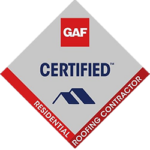The Ultimate Guide to Roof Repairs: When to Fix, When to Replace
Your roof is a critical component of your home, protecting you from the elements and maintaining the structural integrity of your house. Over time, however, roofs naturally wear down due to exposure to harsh weather conditions, temperature fluctuations, and even natural aging. Homeowners often face the dilemma of deciding whether to repair or replace their roof. Making the right decision depends on several factors, such as the extent of the damage, the roof’s age, and your budget. In this blog, we will explore the signs that indicate when a roof needs repairs and when it’s time to consider a full replacement.
Common Signs Your Roof Needs Repair
Some roof issues can be addressed with a simple repair, especially if they’re caught early. Here are some of the most common signs that your roof needs repair:
1. Missing or Damaged Shingles
One of the clearest indicators that your roof needs attention is missing or damaged shingles. Harsh weather, such as high winds, heavy rains, or snow, can cause shingles to become loose, cracked, or even blow off completely. If only a small section of your roof is affected, it’s often possible to repair or replace the damaged shingles without having to replace the entire roof. However, if the damage is widespread or recurring, it may be a sign of a more significant issue.
2. Leaking Roof
A leaking roof is a serious problem that needs immediate attention. Water can enter through damaged shingles, broken flashing, or clogged gutters, causing stains on your ceilings and walls. Left untreated, leaks can lead to mold growth, rotting wood, and damage to your home’s insulation. If the leak is confined to a small area, a roof repair may be sufficient. However, if leaks are frequent or widespread, it could indicate underlying structural damage that requires a full roof replacement.
3. Flashing Damage
Flashing is the metal or rubber material used to seal roof joints and prevent water from entering around vents, chimneys, and skylights. Over time, flashing can become damaged or corroded, leading to leaks. Replacing damaged flashing is a relatively simple and affordable repair. However, if the damage is extensive or if multiple areas of flashing are compromised, a more comprehensive roof evaluation may be necessary to determine whether repairs are enough.
4. Sagging Roof
A sagging roof is a sign of structural issues that should not be ignored. This can occur due to water damage, weakened supports, or excessive weight from snow or roofing material. In some cases, minor sagging can be repaired by reinforcing the underlying support system. However, if the sagging is severe or affects large sections of your roof, a complete roof replacement may be necessary to prevent further damage and ensure the safety of your home.
5. Granules in Gutters
If you notice an accumulation of granules in your gutters, it’s a sign that your shingles are deteriorating. Asphalt shingles are covered in granules that help protect them from UV rays and weathering. Over time, these granules wear away, leaving your roof vulnerable to damage. If the granule loss is limited to specific areas, a repair may be sufficient. However, if granule loss is widespread, it could be an indication that your roof is nearing the end of its lifespan and may need to be replaced.
When to Consider Roof Replacement
While repairs can fix many roof issues, there comes a point when replacing the roof is a more cost-effective and practical solution. Here are some signs that it’s time to consider a full roof replacement:
1. Age of the Roof
The age of your roof is one of the most important factors in determining whether it’s time for a replacement. Most roofs have a lifespan of 20-30 years, depending on the material. If your roof is approaching or has exceeded this age, it may be more economical to replace it rather than continue making repairs. Older roofs are more prone to leaks, shingle damage, and other problems that can lead to costly repairs.
2. Widespread Damage
If a significant portion of your roof is damaged, it may be more cost-effective to replace the entire roof rather than make individual repairs. For example, if more than 30% of your shingles are missing, cracked, or damaged, a roof replacement may be a better long-term investment. Similarly, if multiple areas of flashing, underlayment, or decking are compromised, replacing the roof can provide a more reliable and lasting solution.
3. Frequent Repairs
If you find yourself constantly repairing your roof, it may be time to consider a replacement. While individual repairs can address specific issues, they can become expensive and time-consuming if they occur frequently. A new roof can provide peace of mind and save you money in the long run by reducing the need for constant repairs.
4. Energy Efficiency Concerns
Older roofs can compromise your home’s energy efficiency, especially if they are poorly insulated or have deteriorating materials. A roof replacement with modern materials can improve insulation, reduce heat loss, and lower your energy bills. Additionally, some roofing materials, such as metal or reflective shingles, can help reduce your home’s cooling costs by reflecting sunlight.
5. Water Damage or Mold
Water damage and mold growth are signs of serious roofing problems. If water has infiltrated your home’s structure, it can weaken the wood, insulation, and other building materials. Mold and mildew can also pose health risks to your family. In cases of extensive water damage, a roof replacement may be necessary to prevent further deterioration and ensure the safety of your home.
The Cost of Repair vs. Replacement
One of the biggest concerns homeowners have when facing roof issues is the cost. Roof repairs are generally less expensive than a full replacement, but they can add up over time if your roof requires frequent fixes. On the other hand, while a roof replacement is a significant upfront investment, it provides long-term savings by reducing the need for ongoing maintenance and repairs. Additionally, a new roof can increase your home’s value and improve its energy efficiency, providing further financial benefits.
Conclusion
Deciding whether to repair or replace your roof depends on several factors, including the age of your roof, the extent of the damage, and your long-term goals for your home. Minor issues such as missing shingles or damaged flashing can often be addressed with a simple repair, while more serious problems like widespread leaks or structural sagging may require a full replacement. By staying proactive and addressing roof issues early, you can protect your home from further damage and ensure that your roof continues to provide reliable protection for years to come. If you’re unsure whether your roof needs repairs or replacement, it’s always a good idea to consult with a professional roofing contractor who can assess the condition of your roof and recommend the best course of action.






